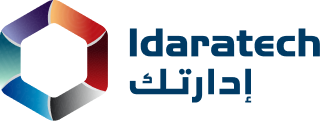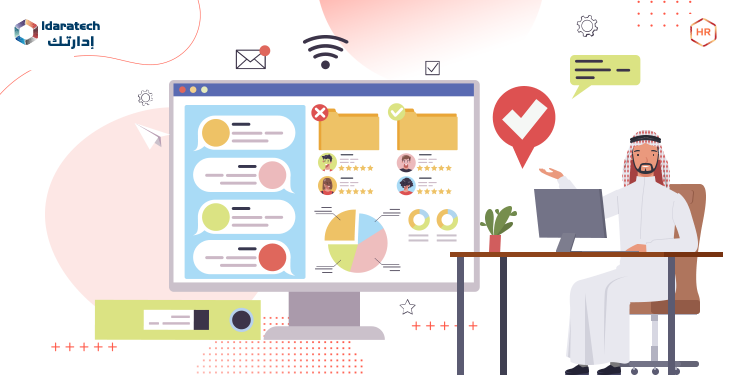The era of paper attendance records for employees is over; biometric attendance tracking is now the norm. Yet, does that make managing attendance and tasks relating to attendance any easier?
One of the important duties in HR operations is overseeing employee attendance. Effective management requires an awareness of the operations’ scope, numerous concepts, and best practices, just like in any other field. A thorough overview of the attendance system and the major duties of an administrator in charge of workforce management are provided in this manual.
Even without biometric technology, the sector has undergone a significant transformation because of the emergence of all-encompassing attendance management software. However, we imply by modifications that it has only improved over time.
To keep this article concise, we have transferred some in-depth information to a related topic, leaving just the overview here. However, if you’re interested in learning the attendance management software’s trade secret and how it may help your business, you might want to keep reading this article.
What is the Attendance Management Software?

An attendance management software is a cloud-based HR technology platform that helps businesses to automate their attendance management processes and maintain tabs on employee working hours. Its web or mobile app enables employees to record their attendance or interfaces with the biometric attendance system to sync attendance inputs automatically. In addition, some attendance management software’ facial recognition technology verifies their identities when employees check-in or leave. HR teams have access to these attendance entries through a single system that is centrally located and always available.
Best Reasons Why use AMS for Attendance Management?

A system for managing employee attendance should be available in every company. However, regardless of how you carry it out, your system must agree to the Fair Labor Standards Act’s timekeeping requirements.
You can exactly calculate the number of hours that employees work with the help of attendance management software. In the unlikely event that you have employees working hourly, this is especially helpful.
The option should be given to you to calculate the precise salaries that you owe your employees. You should also be aware of any unpaid overtime you may have to pay to any employees.
If you pay your employees a salary, you can usually tell how frequently they work. Employees can keep track of their time at work and away from it. When you can’t see them, you can keep an eye on how much they work.
Monitoring employee time will also help you determine whether or not a person is dependable. This might work if you require employees to report the precise time they arrive or depart. You can determine whether a worker arrives late or leaves early.
You may also keep an eye on how much time employees take off by looking at attendance at meetings. This is crucial if your company has a policy allowing employees to take a set amount of vacation or sick days.
Your business’s profitability, dependability, and reputation depend heavily on how well you manage employee attendance. There are a few reasons why attendance management software use for attendance management:
1. You manually keep track of attendance:
Using physical registers or online spreadsheets may seem handy when you only have a few employees. Yet, as your company grows, it could become more difficult for your HR team to monitor employee attendance and collect information for processing payroll. Manually signing registers every morning may be inconvenient for your employees as well. They anticipate that, like their personal technologies, the attendance tracking system used by their company will be user-friendly and simple.
2. Overtime:
Numerous businesses, including hospitals, retail stores, and factories, work several shifts. Nonetheless, excessive production demand may force employees to put in extra time past their regular shifts and on weekends and holidays.
A suitable time-tracking system and accounting procedure are crucial to maximize employee happiness and cut costs. On the other hand, a weak system will result in disagreements, increased labour costs, and stress for the administrators.
3. Higher Productivity:
Physically monitoring and regulating attendance can be a time-consuming, difficult, and expensive task. Dealing with paper sheets and time cards, making plans, approving leave and additional time, and physically making finances all demand some commitment.
You can lose crucial organization time with a mechanized system that handles everything for you, from tracking representative hours to getting data into your finance system.
The time and effort saved, along with the accuracy of the information, help streamline the use of resources, resulting in increased efficiency and additional benefits.
4. Timing Fraud:
Time clocks were first adopted in the industrial era to ensure that employees were paid only while at work. Unfortunately, certain individuals may misuse the system without proper timekeeping and commit time theft by arriving late, leaving early, taking excessive amounts of coffee breaks, etc.
The only way to prevent time theft is to have a reliable system for monitoring attendance and strictly enforcing the rules.
Some employees often shift work that could be completed during regular hours into overtime hours when there is an overtime policy. This is a different form of time stealing. Once more, maintaining accurate records and tracking can significantly help to reduce misbehavior.
5. Simple Integration:
While an attendance management software can handle whatever task you give, there are numerous different systems available that can be integrated with any external attendance equipment and track GPS-based attendance with portable applications.
With a time tracking and attendance management software, you may modify your attendance methods to meet the needs of your business. Every attendance shift can have a unique layout, with options for defining attendance cycles, mark-in/out procedures, leave deductions, and optional events.
6. Discipline:
Discipline issues inside the company cause unpredictability, delays, and variability in the delivery schedule and quality. In addition, incivility may spread like wildfire. It encourages other employees to develop undesirable behavior, aggravating the problem.
Conscious employees initially become dissatisfied and resentful when they observe that indiscipline is accepted and overlooked. As a result, they might eventually leave the company searching for a better workplace while the employer brand takes a serious hit.
Time management practices help lower unpredictability and delays from a lean management perspective.
7. Payroll mistakes occur frequently:
Your employee attendance data is subject to human error when manually tracked. Therefore, employer morale and satisfaction may be impacted if you use the same inaccurate data for payroll processing and incorrectly calculate your employees’ gross pay. In addition, by employing this method, processing payroll can take a lot longer because your employees must manually compute the working hours, vacation time, and overtime information of your employees. As a result, you might be unable to complete payroll on time.
8. Simple to Review Attendance:
You may quickly and easily gain insights into your employees’ attendance using an attendance management software. Would you like a quick summary of all planned and unplanned unfortunate shortcomings for a representative or group?
You can generate comprehensive reports on hours spent, unfortunate shortcomings, and the extra time and get a monthly summary report for any information/bunches inside the organization with just a few clicks.
Any modified report can be created with uniform data, increasing permeability and clarity within the association. Directors can also use the report’s graphical perspectives to quickly and easily understand attendance data.
Managers may consciously break down and further develop their work manner on leave, hours, work environment culture, execution, compensation, and so forth with an integrated, exact attendance information center point, empowering them to change how they work.
9. Discipline:
Discipline issues within the company cause unpredictability, delays, and variability in the delivery schedule and quality. Also contagious is indiscipline. It encourages other employees to develop undesirable behavior, aggravating the problem.
Conscious employees initially become dissatisfied and resentful when they observe that indiscipline is accepted and overlooked. As a result, they might eventually leave the company searching for a better workplace while the employer brand takes a serious hit.
Time management practices help lower unpredictability and delays from a lean management perspective.
10. An impossible task to ensure compliance:
Your attendance data may be dispersed and improperly reported if you don’t have a good system to track employee attendance. This data must be thoroughly documented to maintain compliance with various labour laws, such as those requiring businesses to give workers a specific number of vacation days and pay them for any overtime worked. Your team can experience difficulty organizing attendance data during audits and face costly penalties for non-compliance.
Conclusion
The data on employee working hours may be streamlined with an attendance management software, and your HR team will spend less time keeping track of employee attendance. The human resource management product, Zoho People, enables businesses to track employee attendance in various ways and automate the entire time-tracking process.

